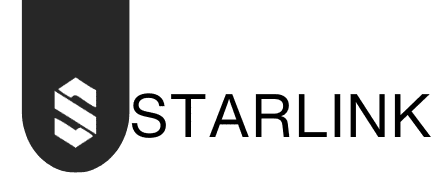Understanding Seeded Crawler URL List: A Comprehensive Guide
In the world of web scraping and data collection, one term that frequently pops up is seeded crawler URL list. If you’re new to this concept, it can seem a bit overwhelming. But don’t worry! In this article, we’ll break down what a seeded crawler URL list is, why it’s important, and how you can effectively use it to gather data for your projects.
What is a Seeded Crawler URL List?
A seeded crawler URL list is a foundational set of web addresses (URLs) that a crawler uses to begin its process of data collection. Think of it as the starting point for a search engine or a web scraper. When the crawler visits these initial URLs, it discovers more links on those pages, allowing it to explore and gather data from various parts of the web.
A Personal Anecdote
Let’s take a moment to share a story. My friend Sam runs a travel blog and wanted to gather information about various destinations. Instead of manually searching for each place, he decided to use a web crawler. He created a seeded crawler URL list that included popular travel websites. By feeding these URLs into the crawler, he was able to gather data about attractions, accommodations, and local tips quickly. Within days, he had enough information to write a comprehensive travel guide.
Why Use a Seeded Crawler URL List?
Using a seeded crawler URL list has several advantages:
- Efficiency: Instead of starting from scratch, a seeded list allows crawlers to access a wide range of information quickly.
- Comprehensiveness: It helps ensure that the crawler captures as much relevant data as possible by exploring interconnected pages.
- Automation: Automating data collection saves time and reduces the risk of human error.
How to Create a Seeded Crawler URL List
Creating an effective seeded crawler URL list involves several steps. Here’s a step-by-step guide to help you get started:
Step 1: Identify Your Goals
Before you create your URL list, it’s essential to define your goals. What kind of data do you want to collect? Are you interested in specific topics, products, or industries? By answering these questions, you can tailor your URL list to your needs.
Step 2: Research Relevant Websites
Next, conduct research to identify websites that are rich in the data you want to collect. Consider using search engines, forums, and social media to find authoritative sites. For example, if you’re collecting data on travel, look for popular travel blogs, forums, and tourism sites.
Step 3: Compile Your URL List
Once you have identified relevant websites, compile a list of URLs. Ensure that the URLs are accessible and relevant to your goals. Use a spreadsheet or a simple text file to organize your list. Here’s a simple format you can follow:
1. https://www.exampletravelblog.com
2. https://www.tripadvisor.com
3. https://www.lonelyplanet.comStep 4: Verify the URLs
Before using the list, verify that all URLs are active and point to the intended pages. Tools like Broken Link Checker can help you identify any broken links.
Step 5: Implement the Seeded List
With your verified list in hand, it’s time to implement it in your web crawler. Depending on the crawler software you’re using, the process may vary. Most crawler tools allow you to input your URL list easily.
Step 6: Monitor and Adjust
After launching your crawler, monitor its progress. Check the data it collects and ensure it aligns with your goals. If necessary, adjust your seeded URL list to include additional URLs or remove any that aren’t yielding useful data.
Types of Seeded Crawler URL Lists
Different types of seeded crawler URL lists can serve various purposes. Here are a few examples:
1. Niche-Specific Lists
These lists focus on a specific industry or topic. For instance, if you’re collecting data on health and wellness, you might include URLs from fitness blogs, nutrition sites, and medical research databases.
2. Competitor Analysis Lists
If your goal is to analyze competitors, create a list of their websites. This can help you understand their strategies and identify gaps in your own data collection.
3. Content Aggregation Lists
These lists can include blogs and news sites that regularly publish content on specific topics. They are useful for gathering trending information and news articles.
Tools for Managing Seeded Crawler URL Lists
To effectively manage your seeded crawler URL lists, consider using tools like:
- Google Sheets: Great for organizing and sharing your URL lists.
- Screaming Frog SEO Spider: This tool can help you analyze websites and find potential URLs to include.
- Ahrefs: Useful for discovering backlinks and identifying relevant sites in your niche.
Best Practices for Using Seeded Crawler URL Lists
To make the most of your seeded crawler URL list, keep these best practices in mind:
- Stay Organized: Maintain an updated and organized list. Regularly review and refine your URLs to ensure they remain relevant.
- Prioritize Quality: Focus on high-quality websites with good domain authority. The data collected from reputable sources is often more valuable.
- Monitor Changes: The web is dynamic, and websites may change their structure or content. Regularly check your URLs to ensure they’re still valid and relevant.
Conclusion: Harness the Power of Seeded Crawler URL Lists
In conclusion, a seeded crawler URL list is an invaluable tool for anyone looking to collect data efficiently and effectively. By following the steps outlined in this article, you can create a robust URL list that helps you gather the information you need for your projects.
Ready to Get Started?
If you’re looking to enhance your data collection efforts, consider implementing a seeded crawler URL list today. With the right approach, you’ll be able to gather meaningful insights quickly, helping you stay ahead of the competition and make informed decisions.
This article provides a comprehensive understanding of seeded crawler URL lists and how to create and use them effectively. Embrace these strategies, and watch your data collection efforts soar!







